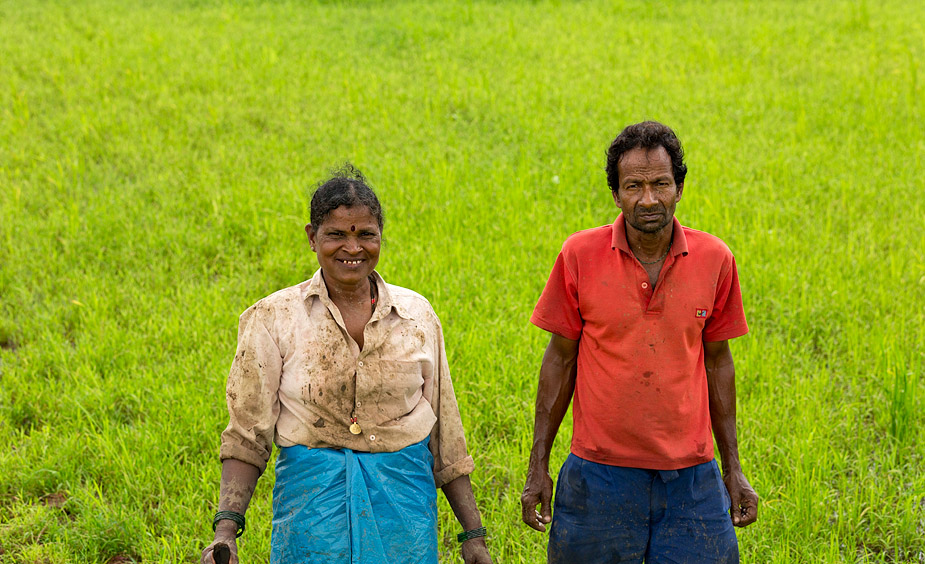An honest day’s work.
Until a generation ago, Goans enjoyed some of the finest produce in the world, all of it locally grown. That situation, unfortunately, has been cured. Fertile paddy fields have now become targets of builders and their politician friends. As a result, farming activity in Goa has been decimated rendering Goans dependent on neighboring states for their grain and greens, most of it inferior in quality and taste to Goa‘s indigenous variety.
Historically, the community of Gaude has been associated with farming in Goa. These are tough, industrious folk and they continue to soldier on despite the bleak future.
During the monsoon months I often stop by to observe these toiling men and women of our fields, and catch some of their rhythm. This is a small selection from earlier this year.
A couple of related posts are here and here.

A long day ahead, Anjuna
5D Mark III, 70-200L f/2.8 IS II

Spreading manure, Anjuna
5D Mark III, 70-200L f/2.8 IS II

Cheery toss, Anjuna
5D Mark III, 70-200L f/2.8 IS II

Traditional methods, Saligao
5D Mark III, 70-200L f/2.8 IS II

In St. Estevem
5D Mark III, 100-400L IS

Archana and Shyam Gaude, St Estevem
5D Mark III, 70-200L f/2.8 IS II

Yesso Gaude, St Estevem
5D Mark III, 100-400L IS

Laxmi Harijan (left) and Shobha Kadam (right) in Casarvernem
5D Mark III, 70-200L f/2.8 IS II

Taking a break, Talaulim
5D Mark III, 100-400L IS





Beautiful shot, especially the Spreading manure pic.
Rajan bab, the central theme and the message that you want to convey in this post is indeed very sad. However, your art is very beautiful. Thank you for all your hard work.
Rajanbab, your camera makes me nostalgic and thoughtful and sad. These iconic images capture our agricultural anthropology. The scenes are just perfect with chlorophyllous setting in dominance. I smell the crushed grass, the mud and the monsoon. Fortunately you encountered some innocence in these areas esp. the Saligao ploughing. Scenario in ‘old conquests’ is disappointing. My ancestors were doing Khazan bundh and farm management or “KAMATPON”, in Divar island before they fled to Karnataka to escape conversion, hence the surname. ‘Go’ in Goa stands for cow and our pastoral and agropastoral heritage. I went to prison on 25 Aug, 1988 alongwith 14 others for a day to save the sprawling khazan fields of Calapur, Morombim and Merces and also fought a PIL on behalf of 1200 farmers, toddy tappers and salt producers. The court delivered a verdict in Jan 1991 and gave relief. Bundhs and roads were repaired. Then I held several farmers meeting with Dr. Hemant Karapurkar to motivate the farmers. But response was poor as tentacles of urbanization had reached these villages. Today there is no flooding in this 400 ha areas but farmers in these villages are expecting windfall income from changing land use. Scrapyards, dance floors, garages and everywhere encroachment by non Goans….It is awful. Every image of Goa’s rustic agro scene that you capture lingers in my mind like sublime poetry of Bakibab and Shankar Ramani – हिरवळ आणिक पाणी तेथे स्फुरती मजला गाणी…may goddess Santeri bless you in this great endeavor for posterity.
I never cease to wonder at those intense greens. Also I love the way you get your subjects’ names and respectfully include them in what, realistically, are formal portraits of working people.